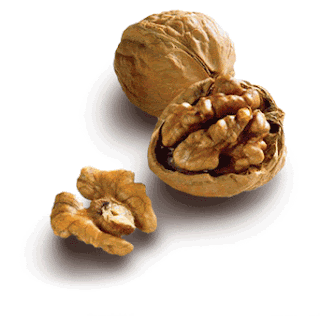Paleo Diet Basics: Why I Eat Walnuts
Image Source: Mariani NutSome contemporary hunter-gatherer tribes displaying a high immunity to diseases of civilization consume fairly large amounts of nuts. Although some nuts richly supply omega-6 fats and an excess intake of corn, soy, or safflower oils rich in these fats may have ill effects, I hesitate to generalize these effects to all whole foods rich in such oils. Since whole foods contain a myriad of compounds, I believe that we have to evaluate each food as a whole, not reduce any food to a predominant nutrient.
The !Kung got up to 50% of their calories from the mongongo nut. The mongongo supplies 57 g fat/100g, and 43% of that fat occurs as PUFA, nearly all linoleic acid (omega-6). Assuming 2000 kcal/d and 1/3 of calories as mongongo, they would get ~16g linoleic/d just from the nuts, then some from game fats.
However, a 100g portion of mongongos also provides approximately 193 mg of calcium, 527 mg magnesium, 3.7 mg iron, 2.8 mg copper, 4 mg zinc, 0.3 mg thiamine, 0.2 mg riboflavin, 0.3 mg niacin, and a stunning 565mg of vitamin E. This very high vitamin E content makes the oil very stable and resistant to oxidation and 'rancidity' for a very long time, in spite of the African heat.
Inland Australian Aborigines consumed considerable amounts of wild walnuts, almonds, candlenut, pine nuts, and even acorns.
I consume fairly large amounts of nuts, particularly walnuts and almonds, more of the former and less of the latter. Walnuts appear to have a number of positive effects on health. I have collected some articles and abstracts of research on the health effects of walnuts. I have not read all of these in full text yet, but a perusal of PubMed shows a clear pattern of independent research on walnuts suggesting significant health benefits.
26.6.11
Walnuts and 9 studies on nuts
Primal Wisdom: Paleo Diet Basics: Why I Eat Walnuts
Labels:
food - nuts
